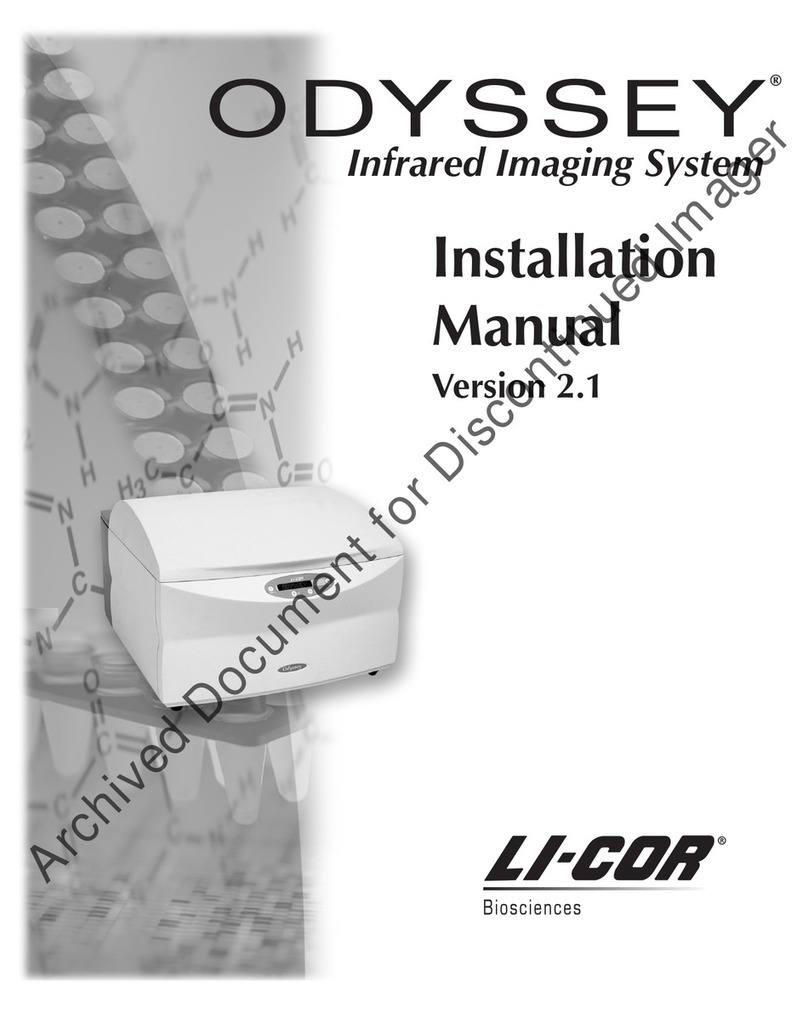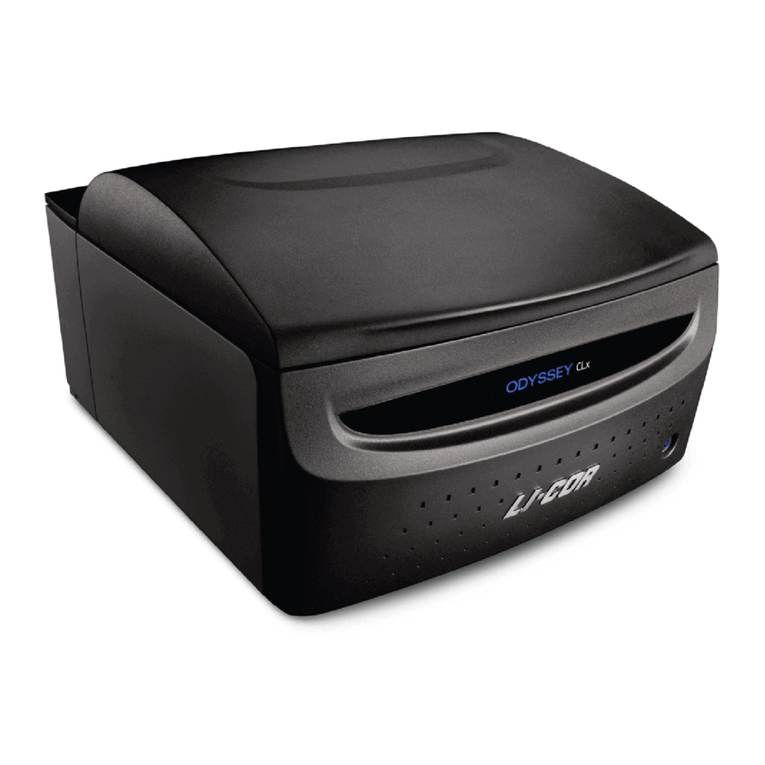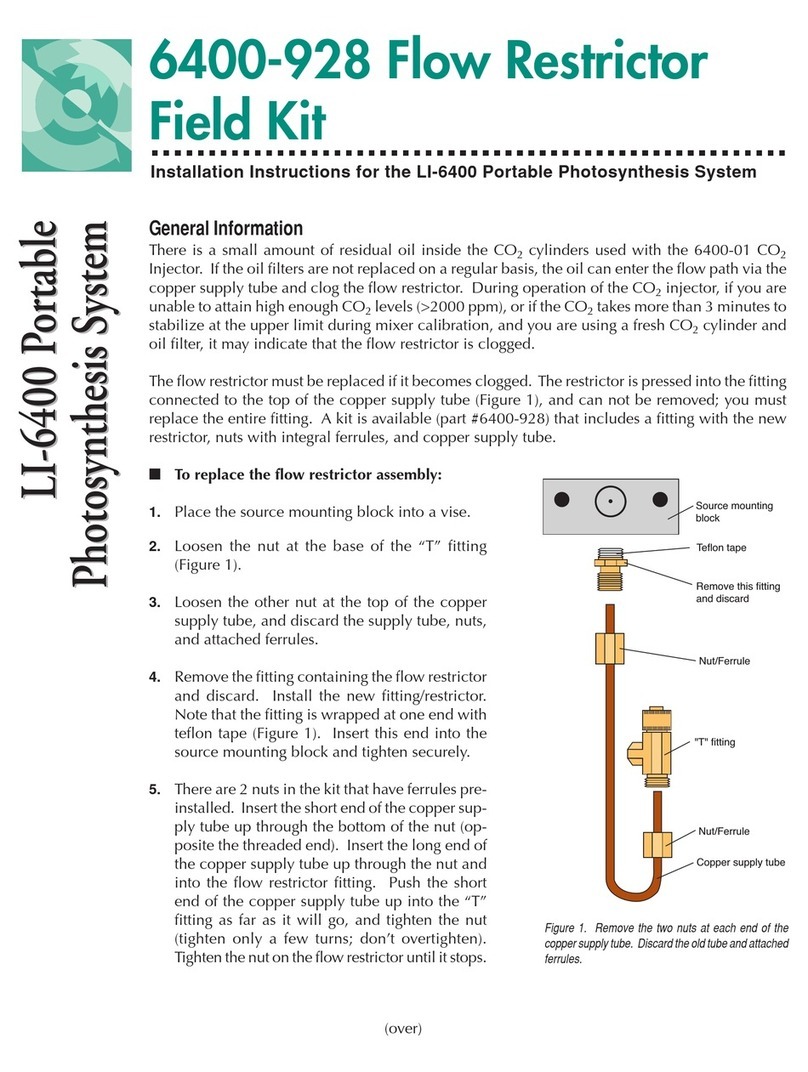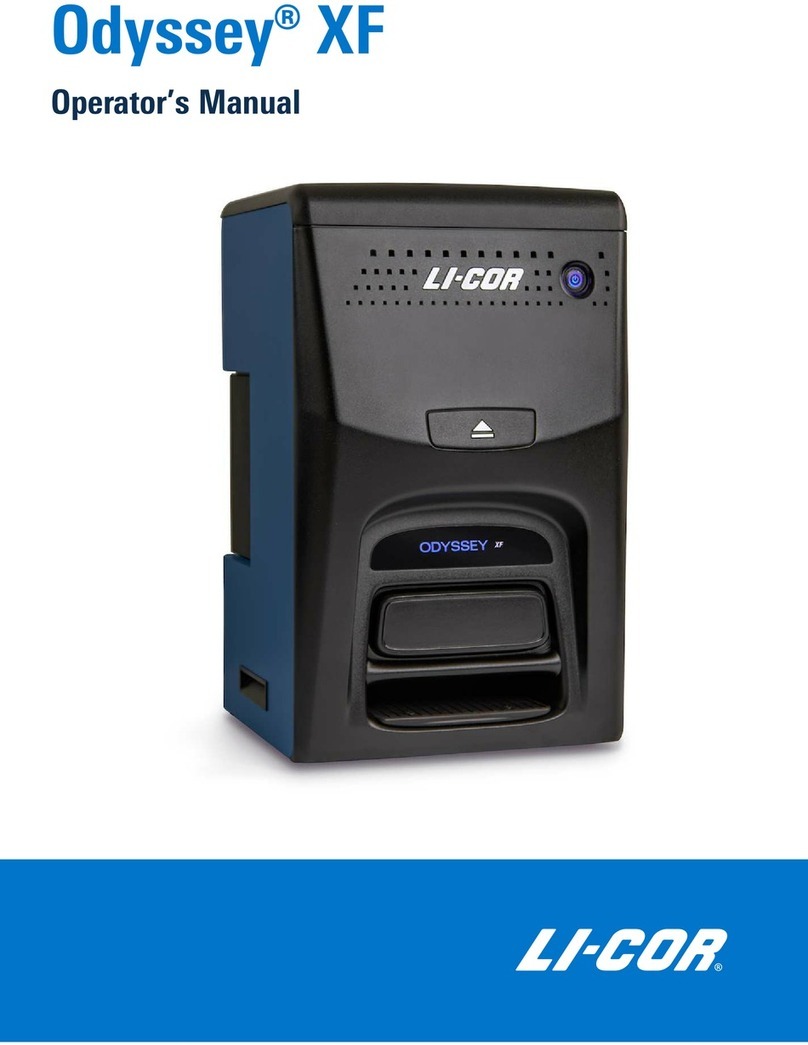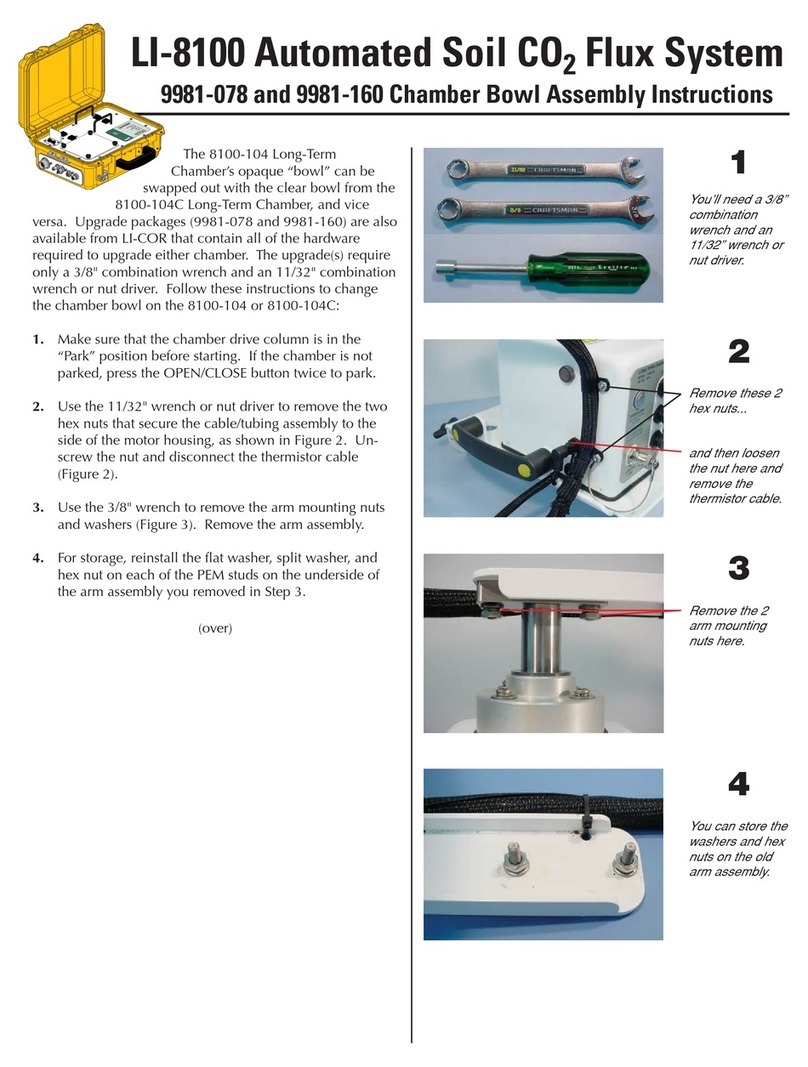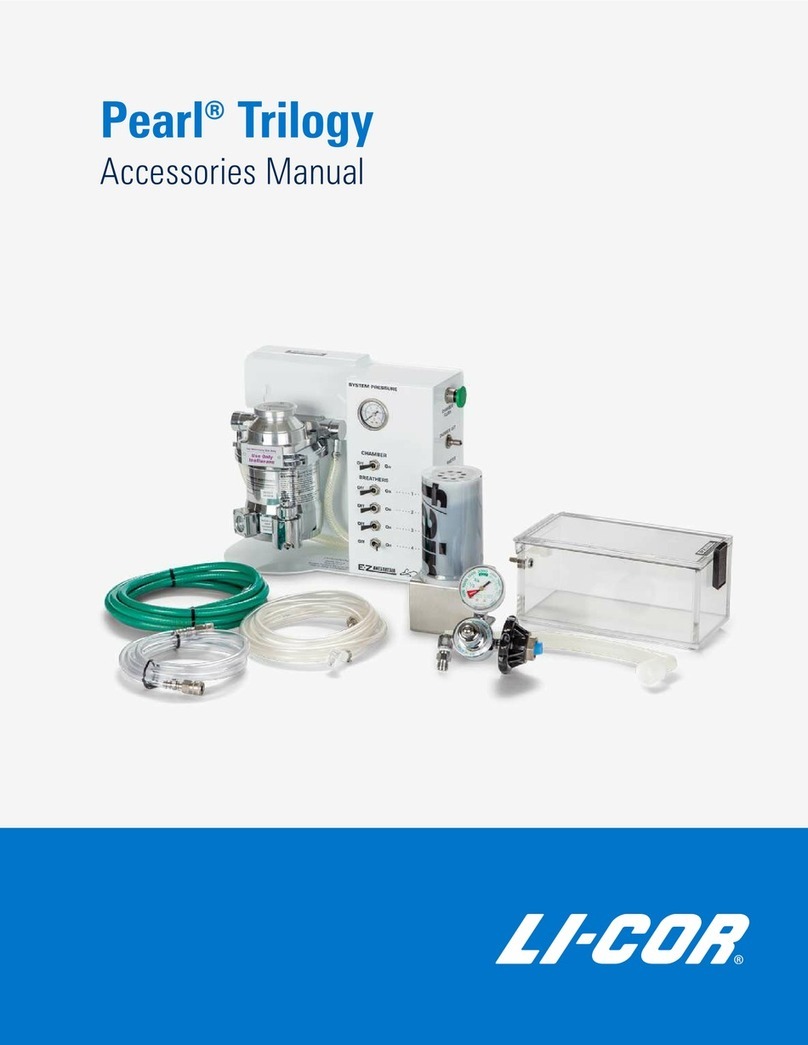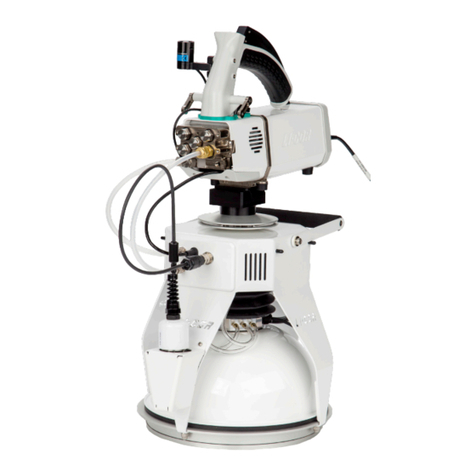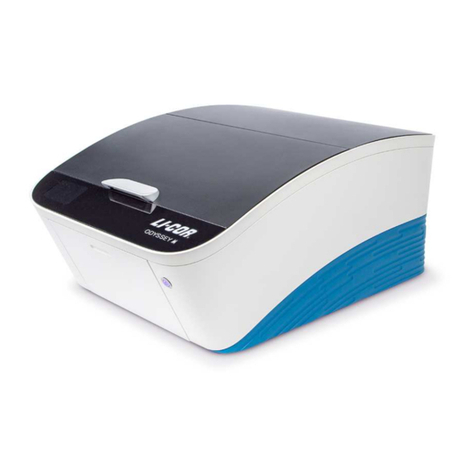
General Information 1-1
1General
Information
Considerations
Soil carbon dioxide is primarily produced by root respiration, decay of
organic matter, and activity of microbes. Rainwater can have direct effects
as well, by displacing gas in soil pore spaces (enhancing CO2flux at the
surface), and by interacting with limestone soils. Also, rainwater itself
carries some dissolved CO2that can be released in the soil.
Thus, soil CO2flux is dependent on soil temperature, organic content,
moisture content and precipitation, and has a great deal of spatial
variability. Soil CO2flux is also extremely sensitive to pressure
fluctuations. An unvented chamber will induce significant pressure
increases just by pushing the chamber down over a sealed volume. Soil
water evaporation and heating of the air in the chamber head space also
induces pressure increases in an unvented chamber. The 6400-09 Soil CO2
Flux Chamber is vented so that pressures inside and outside the chamber are
in a dynamic equilibrium.
Soil CO2flux measured using a chamber system is dependent on the CO2
concentration in the measurement chamber. This is illustrated in Figure
1-1, which shows typical variations in measured soil CO2flux when the
chamber headspace CO2concentration was allowed to rise. Healy et. al.
(1996) used analytical and numerical models of gas diffusion to evaluate
chamber headspace concentration influence on estimates of soil CO2flux.
They found that chamber-induced perturbations of soil-gas concentration
gradients could result in substantial underestimate of soil CO2 flux (6 to
34% for a 30 minute measurement).
The LI-6400 Soil CO2Flux System has been designed to minimize
perturbation in the soil-gas concentration gradient. Before starting the
measurement, ambient CO2concentration at the soil surface is measured.
Once the chamber is installed, the CO2scrubber is used to draw the CO2in
